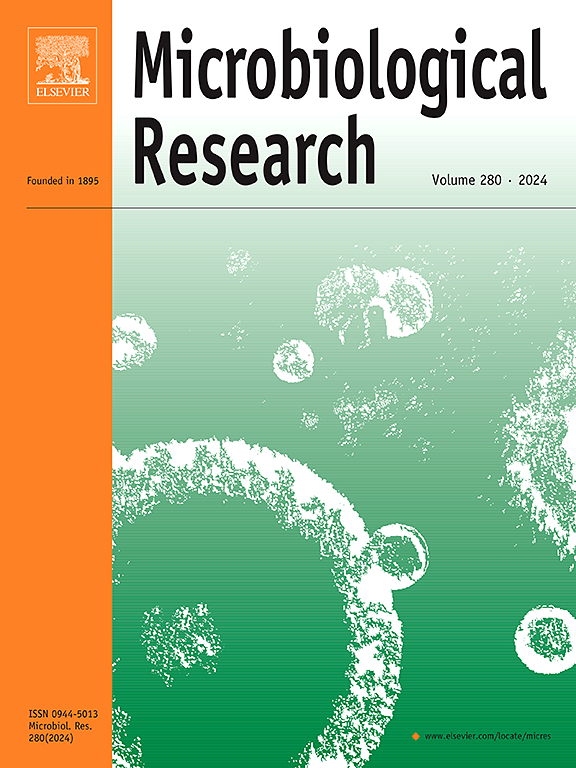霍乱弧菌双组分系统的调控机制:增强致病性和环境适应性
IF 6.1
1区 生物学
Q1 MICROBIOLOGY
引用次数: 0
摘要
霍乱是由霍乱弧菌引起的一种高度危险的疾病,其特征是严重的症状,如水样腹泻、脱水,甚至死亡。霍乱弧菌既能在宿主肠道中定植,也能在环境水库中存活。双组分系统(TCSs)是使细菌适应不断变化的环境的基本调节机制。本文就tcs介导的霍乱弧菌基因表达调控机制作一综述。本文首先综述了霍乱弧菌N16961中tcs的组成和分类。然后,我们讨论了tcs在促进适应各种环境刺激和增加致病性方面的作用。此外,我们分析了tcs在大流行v型和非大流行v型中的分布。霍乱菌株,表明它们在增强毒性和促进大流行病菌株的广泛传播方面发挥着不可或缺的作用。阐明这些机制对于制定防治霍乱和预防未来疫情的新战略至关重要,最终有助于改善公共卫生成果。本文章由计算机程序翻译,如有差异,请以英文原文为准。
Regulatory mechanisms of two-component systems in Vibrio cholerae: Enhancing pathogenicity and environmental adaptation
Cholera, which is caused by the bacterium Vibrio cholerae, is a highly dangerous disease characterized by severe symptoms such as watery diarrhea, dehydration, and even death. V. cholerae can both colonize the host intestine and survive in environmental reservoirs. Two-component systems (TCSs) are essential regulatory mechanisms that allow bacteria to adapt to changing environments. This review focuses on the regulatory mechanisms of TCS-mediated gene expression in V. cholerae. We first summarize the composition and classification of TCSs in V. cholerae N16961. We then discuss the roles of TCSs in facilitating adaptation to diverse environmental stimuli and increasing pathogenicity. Furthermore, we analyze the distribution of TCSs in pandemic and nonpandemic-V. cholerae strains, demonstrating their indispensable role in promoting virulence and facilitating the widespread dissemination of pandemic strains. Elucidation of these mechanisms is crucial for devising new strategies to combat cholera and prevent future outbreaks, ultimately contributing to improved public health outcomes.
求助全文
通过发布文献求助,成功后即可免费获取论文全文。
去求助
来源期刊

Microbiological research
生物-微生物学
CiteScore
10.90
自引率
6.00%
发文量
249
审稿时长
29 days
期刊介绍:
Microbiological Research is devoted to publishing reports on prokaryotic and eukaryotic microorganisms such as yeasts, fungi, bacteria, archaea, and protozoa. Research on interactions between pathogenic microorganisms and their environment or hosts are also covered.
 求助内容:
求助内容: 应助结果提醒方式:
应助结果提醒方式:


